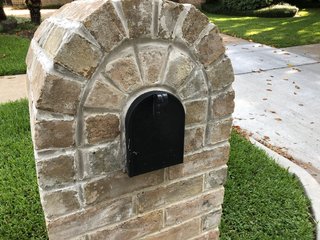Understanding Brick Masonry Repairs: A Guide to Maintaining Longevity
Mailboxes brick fort worth is valued for its durability, timeless beauty, and structural integrity. However, the most robust brickwork can produce issues after a while due to weather, age, or improper installation. Regular maintenance and timely repairs are very important to preserve its appearance and function. In this article, we’ll explore common brick masonry issues, repair techniques, and strategies for prolonging the life of your brickwork. Common Issues in Brick Masonry Cracked Bricks Cracks can result from settling foundations, freeze-thaw cycles, or impact. While small cracks in many cases are cosmetic, larger ones can compromise the structural integrity.  Spalling Spalling takes place when the brick face flakes or peels because of moisture infiltration. This issue weakens the brick and will spread otherwise addressed. Mortar Deterioration (Repointing Needs) Mortar joints deteriorate as time passes, becoming loose or crumbling. This is a common issue in older structures which enable it to lead to water infiltration. Efflorescence A white, powdery deposit on brick surfaces, efflorescence is brought on by water-soluble salts migrating on the surface. It is not harmful but indicates moisture problems. Bulging or Bowing Walls may bulge or bow outward because of water damage, structural stress, or inadequate construction techniques. Brick Masonry Repair Techniques Crack Repair Hairline Cracks: Fill with masonry caulk or sealant. Wider Cracks: Remove loose material, clean the crack, and fill with mortar or epoxy filler. Replacing Damaged Bricks Carefully remove the damaged brick by chiseling out your mortar. Clean the cavity and insert a brand new brick, applying fresh mortar to secure it available. Repointing (Tuckpointing) Remove deteriorated mortar with a depth of 1-2 inches. Fill the joints with fresh mortar, ensuring a smooth and uniform appearance. Addressing Spalling Replace severely spalled bricks. Seal surrounding bricks which has a water-repellent to prevent further moisture infiltration. Efflorescence Removal Brush over powdery deposits using a dry brush or use a mild cleaning solution. Address the root moisture issue to avoid recurrence. Repairing Bulging or Bowing Walls Assess the structural damage using a professional. Reinforce or rebuild the affected wall section, addressing the basis cause of the problem. Preventing Brick Masonry Problems Regular Inspections Check your brickwork periodically for signs of damage, especially after extreme conditions. Proper Drainage Ensure gutters, downspouts, and landscaping direct water faraway from brick surfaces to prevent moisture-related damage. Use Sealants Apply a breathable masonry sealant to shield bricks from water while allowing trapped moisture to leave. Maintain Mortar Joints Keep an eye on mortar joints and address any deterioration before it worsens. Protect Against Impact Avoid using brick surfaces for heavy or sharp objects that can cause cracks or chips. When to Call a Professional While some minor repairs can be remedied as DIY projects, more advanced issues like significant structural damage, bulging walls, or extensive spalling require professional expertise. A skilled mason can ensure the repairs are thorough and durable, preserving the integrity of one's structure. Brick masonry repairs are vital to maintaining the strength, functionality, and wonder of brick structures. By addressing issues promptly and implementing preventive measures, you are able to extend the lifespan of the masonry and steer clear of costly future repairs. Whether it’s any small crack or possibly a major restoration, maintaining your brickwork ensures it continues to stand quality of time.
Spalling Spalling takes place when the brick face flakes or peels because of moisture infiltration. This issue weakens the brick and will spread otherwise addressed. Mortar Deterioration (Repointing Needs) Mortar joints deteriorate as time passes, becoming loose or crumbling. This is a common issue in older structures which enable it to lead to water infiltration. Efflorescence A white, powdery deposit on brick surfaces, efflorescence is brought on by water-soluble salts migrating on the surface. It is not harmful but indicates moisture problems. Bulging or Bowing Walls may bulge or bow outward because of water damage, structural stress, or inadequate construction techniques. Brick Masonry Repair Techniques Crack Repair Hairline Cracks: Fill with masonry caulk or sealant. Wider Cracks: Remove loose material, clean the crack, and fill with mortar or epoxy filler. Replacing Damaged Bricks Carefully remove the damaged brick by chiseling out your mortar. Clean the cavity and insert a brand new brick, applying fresh mortar to secure it available. Repointing (Tuckpointing) Remove deteriorated mortar with a depth of 1-2 inches. Fill the joints with fresh mortar, ensuring a smooth and uniform appearance. Addressing Spalling Replace severely spalled bricks. Seal surrounding bricks which has a water-repellent to prevent further moisture infiltration. Efflorescence Removal Brush over powdery deposits using a dry brush or use a mild cleaning solution. Address the root moisture issue to avoid recurrence. Repairing Bulging or Bowing Walls Assess the structural damage using a professional. Reinforce or rebuild the affected wall section, addressing the basis cause of the problem. Preventing Brick Masonry Problems Regular Inspections Check your brickwork periodically for signs of damage, especially after extreme conditions. Proper Drainage Ensure gutters, downspouts, and landscaping direct water faraway from brick surfaces to prevent moisture-related damage. Use Sealants Apply a breathable masonry sealant to shield bricks from water while allowing trapped moisture to leave. Maintain Mortar Joints Keep an eye on mortar joints and address any deterioration before it worsens. Protect Against Impact Avoid using brick surfaces for heavy or sharp objects that can cause cracks or chips. When to Call a Professional While some minor repairs can be remedied as DIY projects, more advanced issues like significant structural damage, bulging walls, or extensive spalling require professional expertise. A skilled mason can ensure the repairs are thorough and durable, preserving the integrity of one's structure. Brick masonry repairs are vital to maintaining the strength, functionality, and wonder of brick structures. By addressing issues promptly and implementing preventive measures, you are able to extend the lifespan of the masonry and steer clear of costly future repairs. Whether it’s any small crack or possibly a major restoration, maintaining your brickwork ensures it continues to stand quality of time.